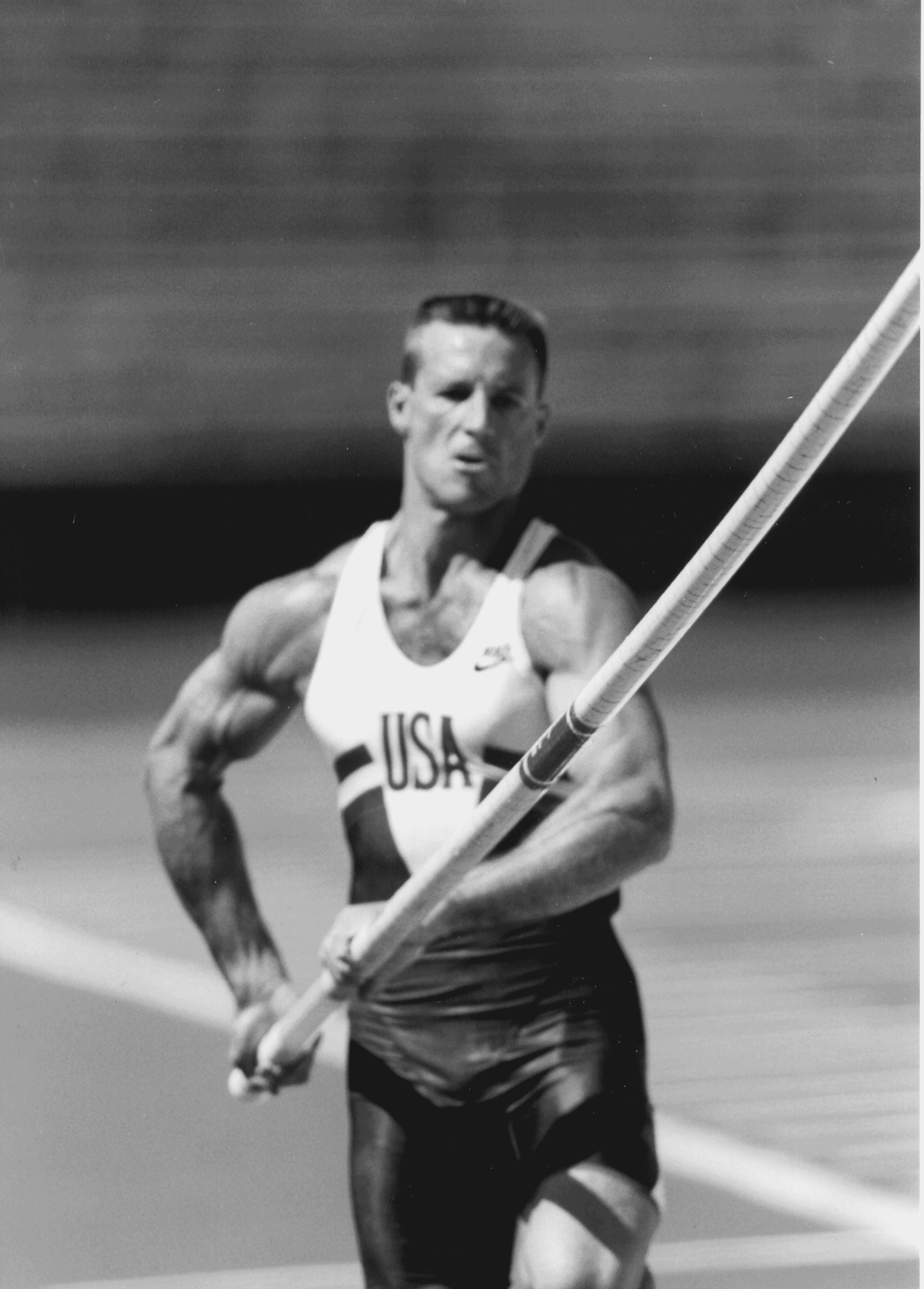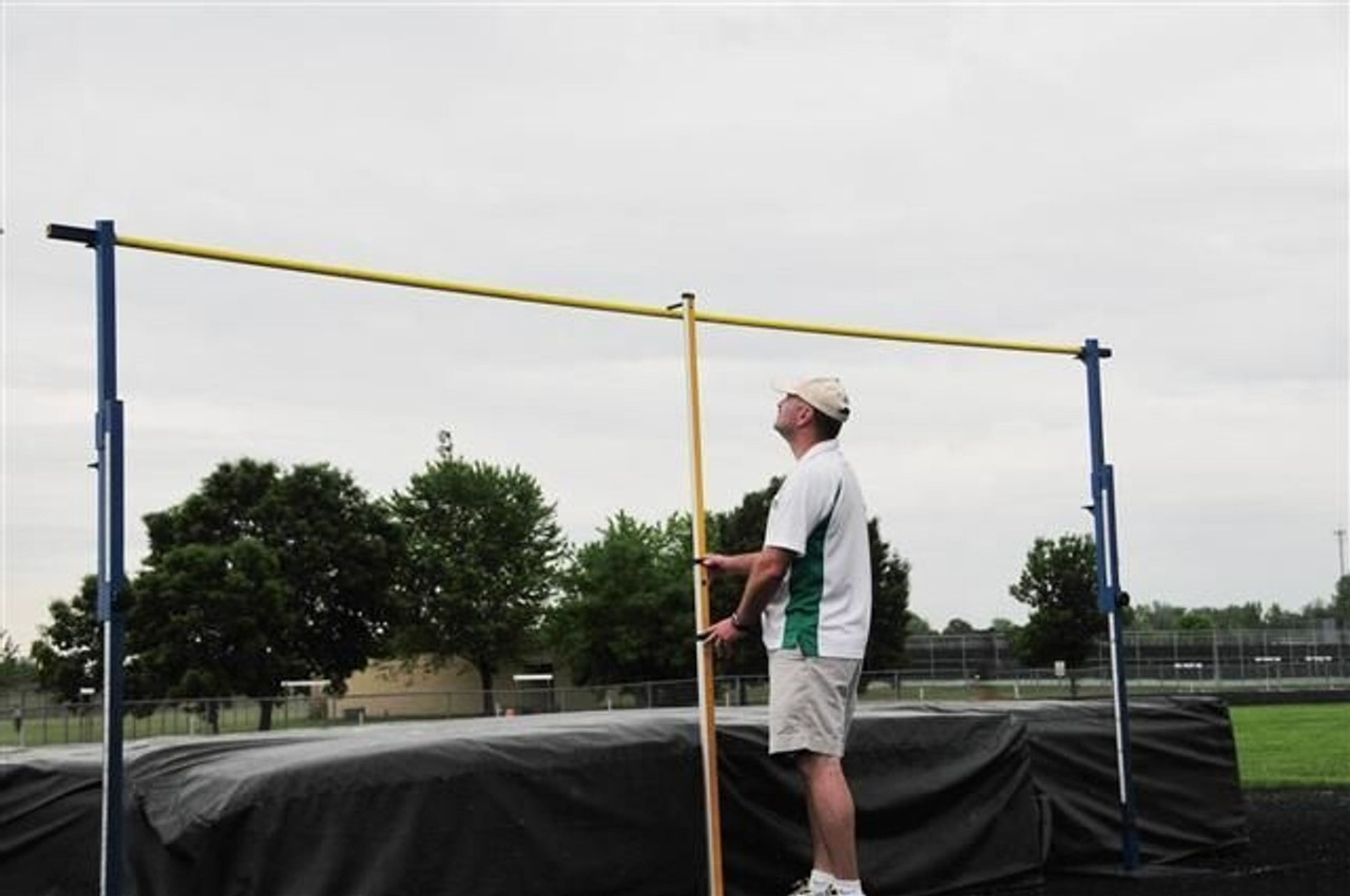A Comprehensive Guide to the History of Pole Vault: From Early Beginnings to Record Heights
Explore the fascinating evolution of pole vaulting, from ancient Egypt's practical uses to modern-day record-breaking feats. Discover how this unique track and field event has transformed over millennia.
The pole vault is a unique and captivating event in track and field, characterized by athletes propelling themselves over high bars using long poles. Understanding the history of the pole vault provides insight into its evolution from ancient practical uses to a high-tech sport that continues to push the boundaries of human athleticism. This article delves into the rich pole vault history, exploring its ancient roots, significant milestones, and modern advancements.
Ancient and Early History
Ancient Civilizations (2500 B.C. - 500 B.C.)
The origins of pole vaulting can be traced back to ancient civilizations where poles were used for practical purposes. In ancient Egypt, relief sculptures from the 4th and 5th Dynasties (circa 2500 B.C.) depict the use of poles for scaling walls and crossing irrigation ditches. These early applications demonstrate an understanding of leveraging pole mechanics long before it became a competitive sport.

Ancient Greece and Rome (500 B.C. - 300 A.D.)
In ancient Greece, pole vaulting is depicted in vase paintings and referenced in literary works. Although it wasn't a formal Olympic event, the Greeks used poles to leap over obstacles, showcasing their grasp of the sport's principles. The Romans also practiced similar techniques, with Ovid referencing the use of spears as levers.
The Tailteann Games of Ireland (1829 B.C. - 1166 A.D.)
The Tailteann Games in ancient Ireland included pole vaulting as early as 1829 B.C. Held in County Meath, these games featured various athletic competitions, including the pole vault. The practice likely emerged from the practical need to cross natural barriers in the Irish countryside.
The Middle Ages to the 19th Century
The Middle Ages and Renaissance (500 A.D. - 1700 A.D.)
During the Middle Ages, pole vaulting saw a decline, likely due to the violent and unstable conditions of the period. However, messengers known as heralds used long staffs to vault over obstacles, laying the groundwork for modern pole vaulting. This period also saw the use of long spears and pikes in warfare, influencing the development of vaulting techniques.
GutsMuths and the Birth of Modern Pole Vaulting (1792)
Johann Christoph Friedrich GutsMuths, a German educator, is credited as the father of modern pole vaulting. His 1792 book Gymnastik für die Jugend detailed the design of jumping standards and vaulting techniques, laying the foundation for the sport's development.
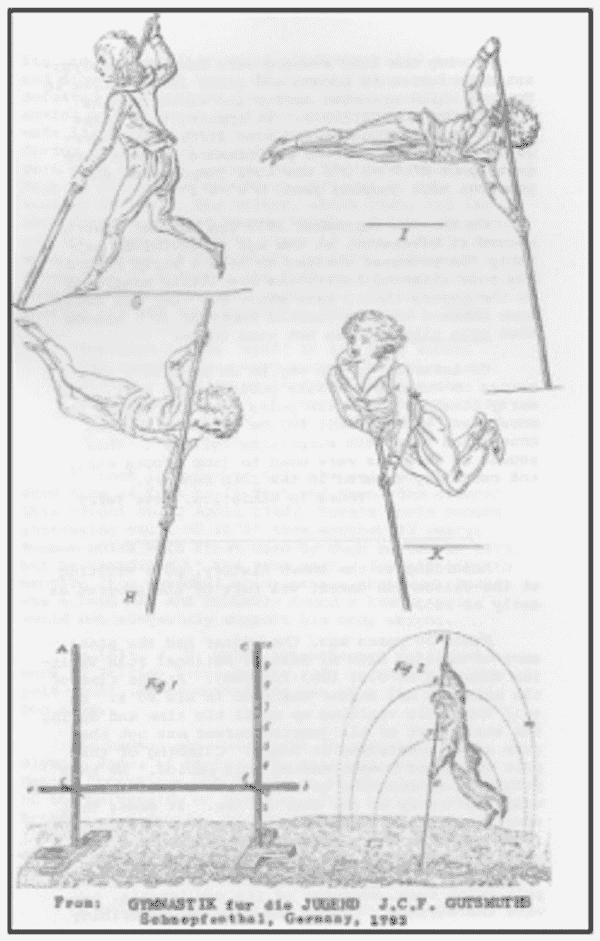
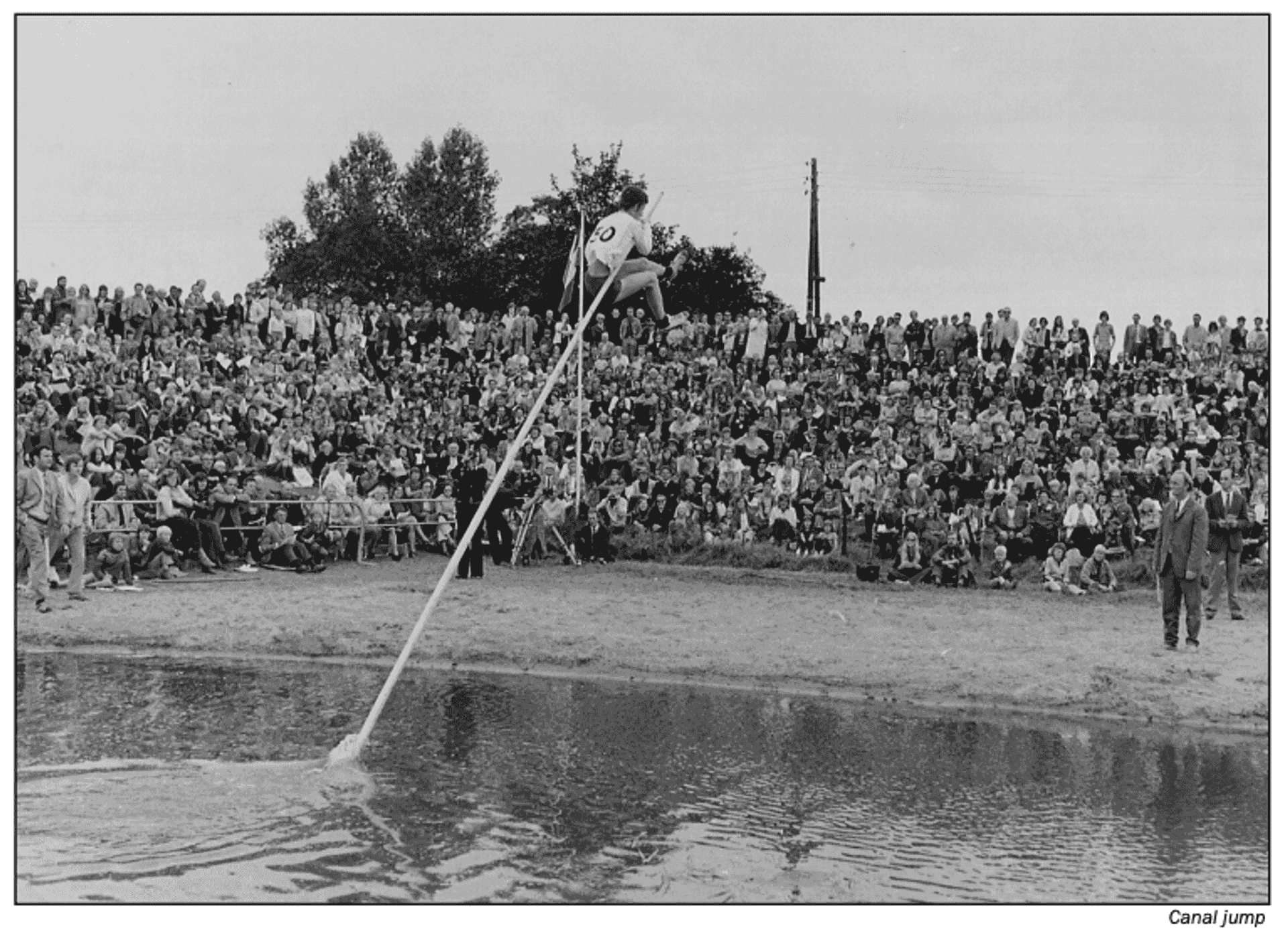
The 19th Century: The Birth of Competitive Pole Vaulting
The 19th century marked the formalization of pole vaulting as a competitive sport. In England, the Royal Military College at Sandhurst included pole vaulting in its athletic programs as early as 1812. By the mid-1800s, schools like Rugby and Eton had adopted the event. The first intercollegiate athletic meet, held between Oxford and Cambridge in 1864, featured pole vaulting. J. Wheeler set the first recorded world record in pole vaulting in 1866 with a height of 10 feet, marking a significant milestone in pole vault history.
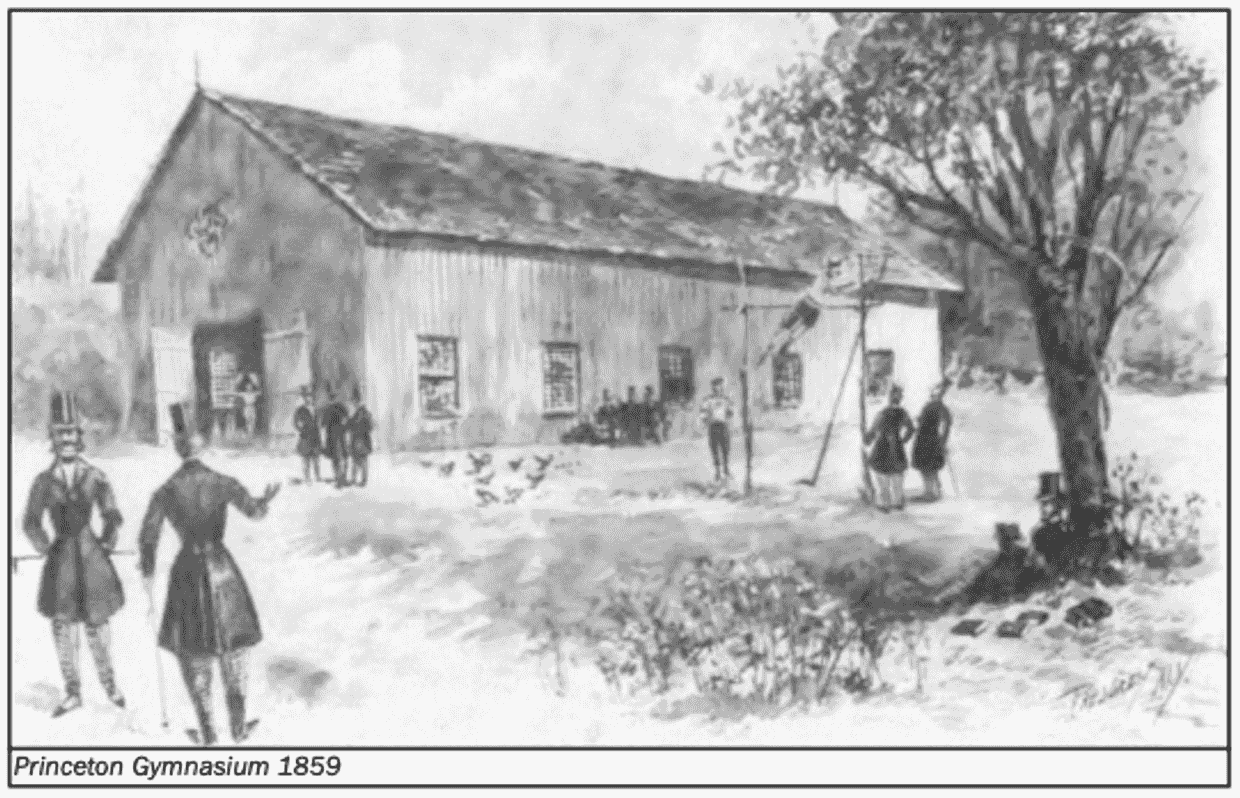
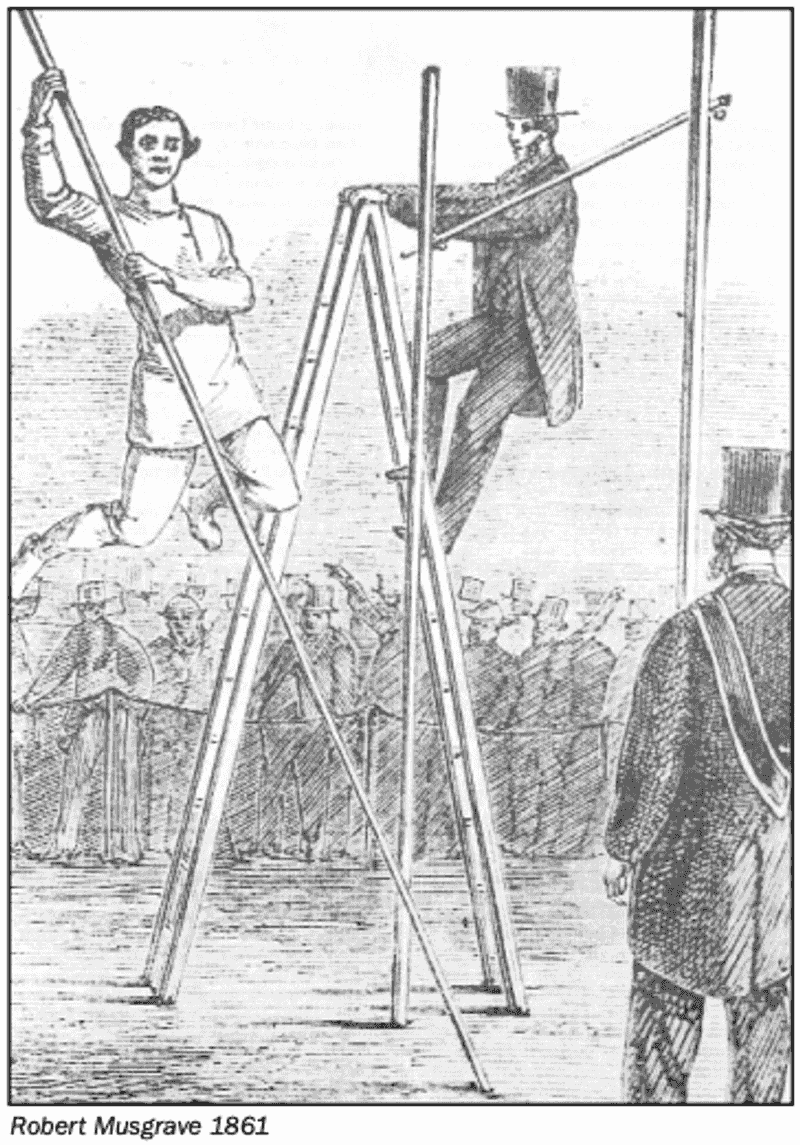
The 20th Century to the Modern Era
Early 20th Century (1900 - 1950)
The early 20th century saw significant advancements in pole vaulting techniques and equipment. The introduction of bamboo poles in the 1920s allowed vaulters to achieve greater heights. American vaulter Cornelius Warmerdam set multiple records using bamboo poles, reaching heights over 15 feet.

The Fiberglass Revolution (1950 - 1970)
The 1950s and 1960s brought a revolutionary change with the introduction of fiberglass poles. These poles, lighter and more flexible than bamboo, transformed the sport. Vaulters like Bob Richards and John Pennel pushed the boundaries, with Pennel becoming the first to clear 17 feet in 1963. Watch his World Record Pole Vault of 17'6.25" here. Aubrey Charles Dooley’s thesis, A History of Fiberglass Pole Vaulting, provides an in-depth look at the development of fiberglass poles, highlighting the contributions of key figures like Bob Mathias and Bob Smith.
The Modern Era: Reaching New Heights (1970s - Present)
The fiberglass era continued to see records broken, with athletes like Sergey Bubka dominating the sport. Bubka, competing for the Soviet Union and later Ukraine, set 35 world records and was the first to clear 20 feet in 1985, significantly advancing the sport. In recent years, advancements in training techniques, equipment, and sports science have further pushed the limits of pole vaulting. Vaulters like Renaud Lavillenie and Armand Duplantis have set new records, with Duplantis currently holding the world record at over 20 feet.
Conclusion
From its ancient origins to the high-tech sport it is today, the history of the pole vault is a testament to human ingenuity and athleticism. Its evolution reflects changes in technology, techniques, and athleticism, making it one of the most fascinating events in track and field. As the sport continues to grow, the legacy of early vaulters lives on, inspiring new generations to reach even greater heights.





